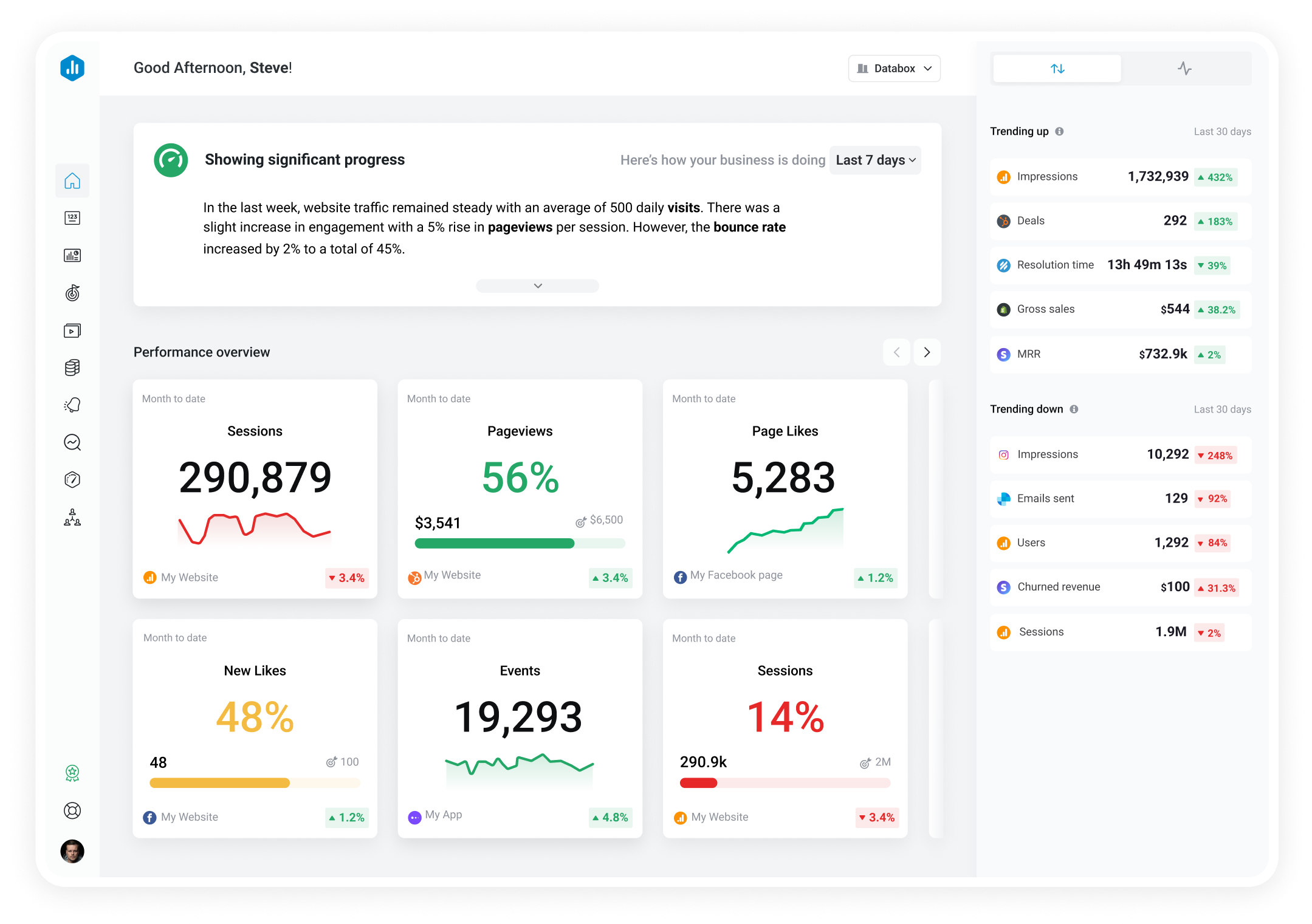Track all of your key business metrics from one screen
GET STARTED
 Outreach
Bounced Prospects
Outreach
Bounced Prospects Bounced prospects is a measure of the number of emails that could not be delivered to a prospect's inbox, typically due to an invalid email address or full mailbox.
With Databox you can track all your metrics from various data sources in one place.

Used to show a simple Metric or to draw attention to one key number.
Databox is a business analytics software that allows you to track and visualize your most important metrics from any data source in one centralized platform.
To track Bounced Prospects using Databox, follow these steps:
 Goals
Goals Scorecards
Scorecards Metric Digest
Metric Digest Metric Builder
Metric Builder Data Calculations
Data Calculations Performance Screen
Performance ScreenThis template will enable you uncover key insights in your prospecting efforts and help you track the impact of every touch point.

